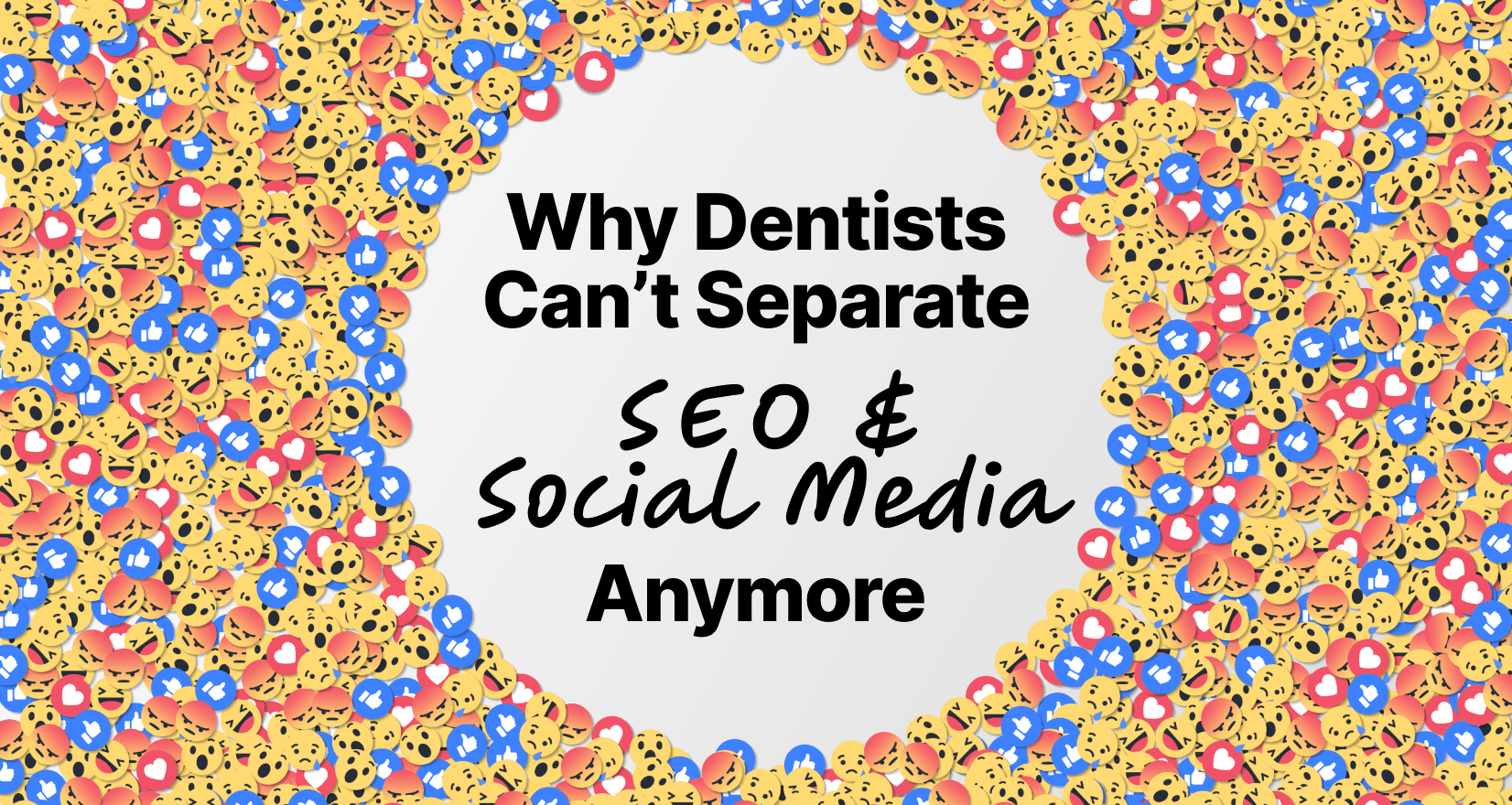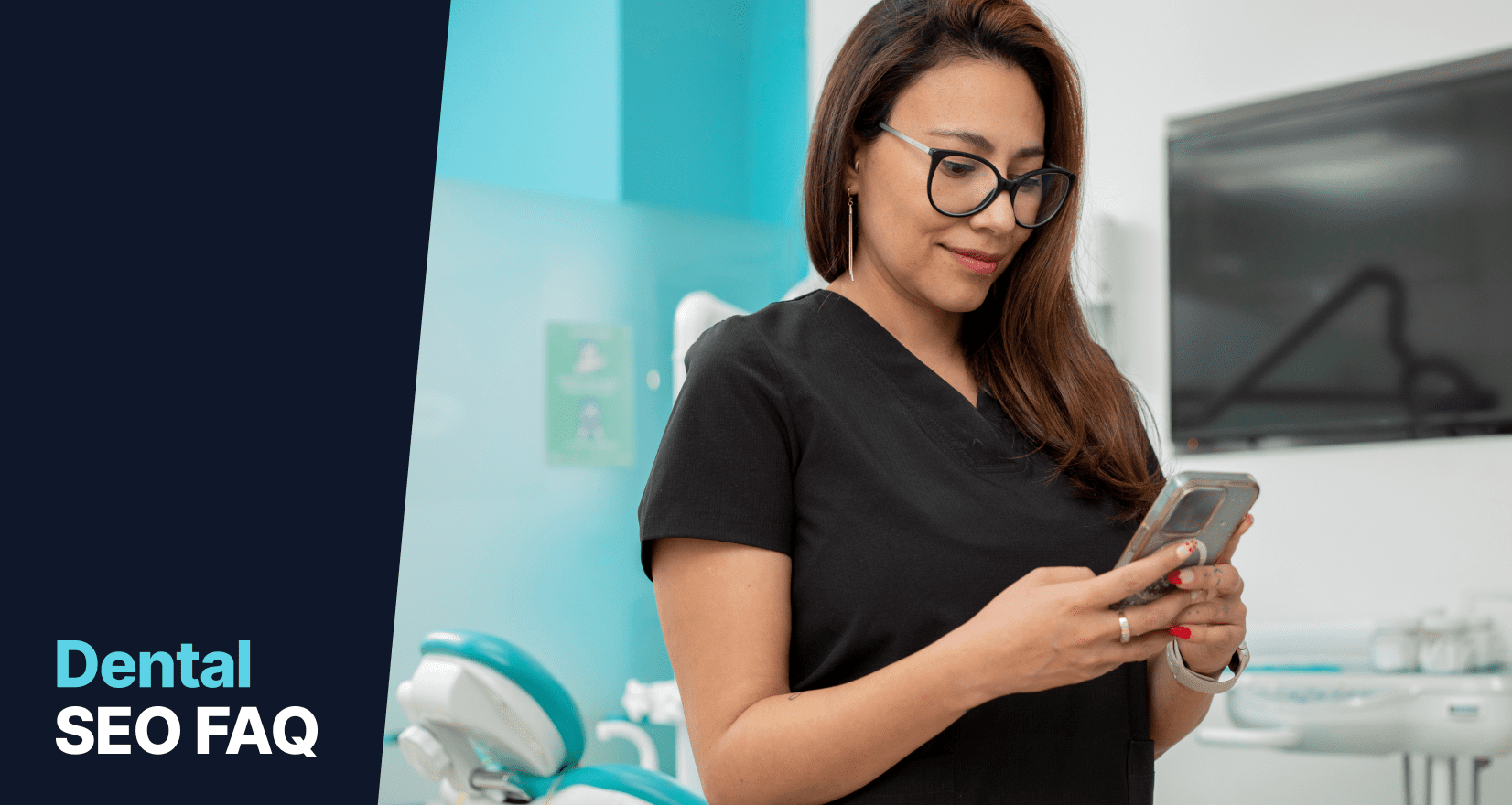Dental SEO Marketing Questions & Answers
When you first step into the world of dental SEO marketing, you might think you have it all down. You know what SEO stands for, you’ve heard about Google rankings, and maybe you assume success means stacking a site with keywords.
But here’s the truth: SEO is deeper than that. And it’s constantly evolving—especially for dental practices trying to reach local patients.
these are the real questions we hear from dentists and dental teams every week. No fluff. Just clear answers from a team that helps dental practices grow with smarter SEO.
1) What is dental SEO?
Dental SEO (Search Engine Optimization) is the process of improving your practice’s visibility online—so your website, Google Business Profile, and other content show up when people search for dental services in your area. It’s a mix of strategy, content, and technical tweaks that help search engines (like Google) understand what your practice does, and who should see it.
2) Why does my dental practice need SEO?
Because nearly everyone searches online before choosing a dentist. Whether it’s “kids dentist near me” or “emergency dentist in Boise,” your ideal patients are using Google. Without solid dental SEO, your practice simply won’t appear when they’re ready to book.
3) Why is it called a “blog”?
Short for “web log.” Over time, it got shortened to “blog,” and it stuck.
4) What’s the difference between hyperlinks and backlinks?
- A hyperlink is any clickable link that sends a user somewhere (within your site or another).
- A backlink is a link from someone else’s website that points back to yours—and that’s gold for SEO. Backlinks show Google that others trust your content.
5) What’s a good goal to set for dental SEO?
- Great SEO goals are measurable. For example:
- Rank in the top 3 for your primary service + city (“cosmetic dentist Denver”)
- Show up in the Google Maps 3-pack
- Increase monthly website traffic by 30%
- Generate 15+ calls per month from organic search
6) How do I spy on my competitor’s dental SEO?
Tools like Semrush, Ahrefs, and BrightLocal let you peek behind the curtain. You can see what keywords competitors rank for, how many backlinks they have, and how well their website performs.
7) What’s the difference between local SEO and general SEO?
- Local SEO focuses on showing up in your area’s map results (Google Business Profile, reviews, local citations).
- General SEO aims to improve your website rankings in organic (non-map) search results.
Both matter, but local SEO is especially critical for dentists.
8) What does https:// mean?
It means your website is secure. The “s” stands for “secure”—and Google gives preference to secure sites. If your site is still HTTP (no “s”), it’s time to upgrade.
9) What’s the difference between organic and paid results?
- Organic results: Appear naturally based on SEO, not money.
- Paid results: You pay Google to appear at the top. These say “Sponsored.”
Organic SEO takes longer, but it builds long-term trust and traffic.
10) What is a web crawler?
A crawler (or bot) is how search engines scan the internet. They read and “index” your site’s pages to decide what’s relevant for different searches.
11) What is a web spider?
Same thing—just another name for a web crawler. Creepy name, helpful purpose.
12) When will I rank on page one?
It depends. SEO is influenced by competition, content quality, website structure, and links. Some dentists see results in a few months; for others, it can take longer. Anyone promising instant results is selling snake oil.
13) What is a meta description?
It’s the short snippet under your page title in search results. It doesn’t directly impact rankings, but a good meta description can increase clicks.

14) Should I change my website domain to include keywords?
No. Choose a domain that matches your brand. Keyword-stuffed domains look spammy and can hurt trust. “DrSmithDental.com” is better than “BestFamilyDentistInPhoenixNearMe.com.”
15) How many times should I use a keyword on a page?
There’s no magic number. The key is writing naturally and answering patient questions. Overusing keywords (aka “keyword stuffing”) will backfire. Use a tool like Yoast or RankMath to keep your content in the sweet spot.
16) What’s the difference between inbound and internal links?
- Inbound links come from other websites.
- Internal links connect different pages within your website.
Use both. They guide users and help search engines crawl your site effectively.
17) How many internal links should I use per page?
As many as are helpful. Don’t force it. A good rule: if it makes the page easier to navigate and discover related content, link it.
18) Where is the “|” symbol on my keyboard?
Mac: Above Return key.
PC: Often near the Backspace key.
You’re welcome.
19) Do I need to learn code to do SEO?
Nope. Many tools simplify things so you don’t have to code. That said, a basic understanding of how your site works (like HTML or page speed issues) can help you make smarter SEO decisions.
20) What is robots.txt?
It’s a file that tells search engines which pages of your site they’re allowed to crawl. If set up incorrectly, it could accidentally block your site from appearing in search results.
21) What is a sitemap.xml?
It’s a list of all your website’s pages. You submit it to Google via Search Console so bots can crawl and index your site efficiently.
22) What’s the difference between crawling and indexing?
- Crawling = scanning your site.
- Indexing = storing and displaying it in search results.
Not everything crawled gets indexed. That’s why optimizing content is crucial.
23) How do I see what pages are indexed?
Go to Google and type:
site:yourdomain.com
You’ll see what pages Google currently indexes.
24) Why do I need alt text for images?
Search engines can’t “see” images. Alt text describes what the image is about, improving SEO and accessibility for screen readers.
25) How long does dental SEO take to show results?
It depends on your site’s current authority, how competitive your market is, and how consistently you invest in content and link-building. Some results may show in 1–3 months; bigger gains usually come after 6–12 months.
26) What am I actually paying for when I hire an SEO agency?
You’re paying for:
- Content creation
- Website optimization
- Link-building strategies
- Tracking and reporting
- Technical fixes
- Also: time. SEO takes a lot of it. A good agency saves you hours and avoids costly mistakes.
27) Can I do my own SEO?
Yes—especially with tools like Yoast, Surfer SEO, or SEMRush. But like pulling your own tooth… just because you can, doesn’t mean you should. Hiring pros from a dental marketing company often delivers faster, better ROI.
28) How is AI changing dental SEO?
AI SEO is changing everything from how Google ranks pages to how patients search (via voice assistants or AI summaries). Your content now needs to:
- Answer questions clearly
- Be structured for featured snippets
- Include schema markup
- The goal: be the source AI pulls from.
29) Is it okay to use AI to write content?
Yes—with limits. AI is a dental marketing tool, not a replacement. Use it to draft ideas, outlines, or social posts, but always have a human edit and personalize the final version. Google prioritizes helpful, trustworthy content regardless of who (or what) wrote it.
Want Help With Your Dental SEO?
That’s what we do—day in, day out. Whether you’re starting from scratch or trying to level up an existing site, we’ve got proven strategies and the best team in the dental industry to back them up.
About the Author: Megan Nielsen is an SEO strategist and the Grand Overlord of copywriting at My Social Practice. My Social Practice is a dental marketing company that offers a full suite of dental marketing services to thousands of dental practices throughout the United States and Canada.
![[Byte Sized Podcast Ep. 23] Frictionless Online Dental Scheduling: Why Your Practice Needs It Now Feat. Colin Ambler - Dental SEO Marketing Questions - My Social Practice - Social Media Marketing for Dental & Dental Specialty Practices online dental scheduling](https://mysocialpractice.com/wp-content/uploads/2025/12/byte-sized_ep23.png)






![[Byte Sized Podcast Ep. 23] Frictionless Online Dental Scheduling: Why Your Practice Needs It Now Feat. Colin Ambler - Dental SEO Marketing Questions - My Social Practice - Social Media Marketing for Dental & Dental Specialty Practices online dental scheduling](https://mysocialpractice.com/wp-content/uploads/2025/12/byte-sized_ep23-100x100.png)



